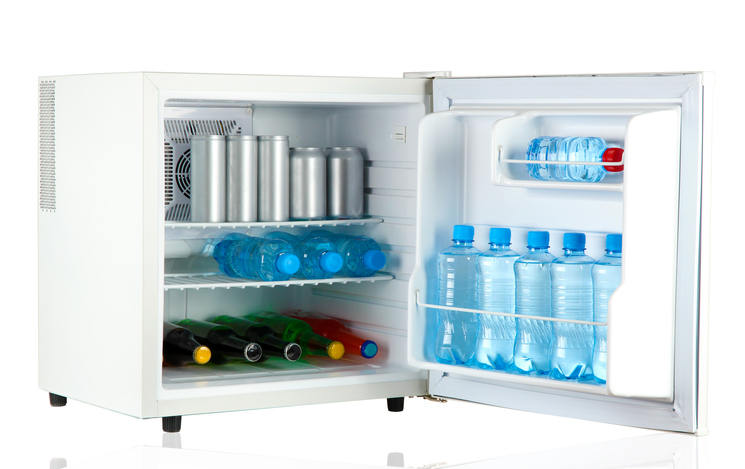Take a moment and imagine the typical minibar in a traditional big box hotel. Stocked with the basic assortment of national beers, a few half-bottles of wine for some plonky mass-produced label, some one-shot servings of the most common hard liquor brands and perhaps a bite or two of sugary snacks, this isn’t doing your property any favors.
At this point, some executive will object to say that the minibar is a fruitful line item because it yields four digits of profit per year. I would counter argue that the hidden — albeit not directly quantifiable— damage done to your brand is costing you far more than what’s revealed by any sort of P&L analysis of this revenue stream.
The simple reason is that a minibar filled with boring items that can be purchased nearly anywhere in the world represents a missed opportunity to immerse your guests in your locality or to surprise and delight them.
At this point, it’s important to consider what type of hotel you run and what the average expectation is. A luxury guest expects a fully stocked minibar while a select service customer may prefer an empty fridge to then pack full of whatever can be bought at the nearest convenience store. These differential situations will inform how best to give your minibar a modern makeover that will add value to your property through both increasing the top line and augmenting the overall experience.
It’s this latter benefit that I consider to be most critical as it means better reviews online, more positive word of mouth, heightened shares on social media and so on. As a pie in the sky idea, imagine again that there was an award given out by a popular online review website for ‘best minibar’ and you were the market leader. Obviously, this will never be the linchpin of your success, but it’s nonetheless one more way to standout and differentiate your marketing approach.
Starting with the select service breed, an empty fridge is a glass-half-full opportunity to make a good impression. When the expectation is to not be presented with a gratis treat upon arrival, a little bit goes a long way. For instance, you might place two bottles from a local brewery partner along with two chilled pint glasses inside and a sign card quickly describing the on-the-house sample as well as nudging guests so they know there’s actually something waiting for them. If free alcohol isn’t in the budget, consider craft sodas or artisanal baked goods. Protein bars are a good bet. The key is that this token gesture will come as a surprise and thus be very well received.
The luxury guest is far more discerning, though. They expect a proper assortment and, as with all your other dining options, local and boutique product sourcing is the norm. Therefore, to wow this crowd you have to first meet the demand for a regionally specific experience by stocking the fridge with a variety of bespoke goods that will serve to deepen the guest’s connection to your city or area. As a side benefit of this activity, any partnerships you form here will strengthen your hotel’s bonds to the community, which in turn can help play to your favor regarding labor, political or other issues.
Second and importantly, you must theme your selection of products. Just as the standard minibar doesn’t win over guests through its ‘shotgun approach’, go a step further and specialize what’s on display. After all, it’s a small space, so you would be better served by having a limited range of options within a few food and beverage categories rather than trying to have one or two of everything. And again, a bit of signage here will help to draw attention to your minibar so guests know that they shouldn’t expect the standard, boring assortment offered at any other hotel.
The best illustration of this point is in wellness hotels. With an overarching objective of promoting the guest’s health, the minibar in a wellness property can become yet another lucrative vehicle to express this theme. Eschewing a near-complete minibar domination by alcoholic drinks, such a property might instead place vegetable juices and small bottles of restorative elixirs, in addition to a few nutritious or fibrous snacks.
True, the shelf life on these products must be evaluated against the rate of consumption to find the right balance, but the potential benefits of differentiation in this regard can far outweigh a small amount of spoilage. In this sense, the minibar substantiates and enriches the overall story.
As a more extreme example of this concept and one that would be worthy of its own press release, imagine a resort in a sun destination ditching the typical mini-fridge and installing in its place a mini-freezer packed full of ice cream flavors and chilled desserts made by the local creamery or, better, house-made by your pastry team. Guests would then immediately know that they had a blissfully cooling treat available upon arrival, while it would also perfectly fit within a tropical motif.
Either way you approach it, you should start to rethink how you view this guestroom amenity in terms of how it enhances your brand’s story, in addition to revenue opportunities. Some hotels are even removing the minibar altogether so as to drive additional traffic to the restaurants and create more of a social vibe. The choice is yours, and I can say from experience that it won’t be an easy process – but nothing worthwhile ever is!
